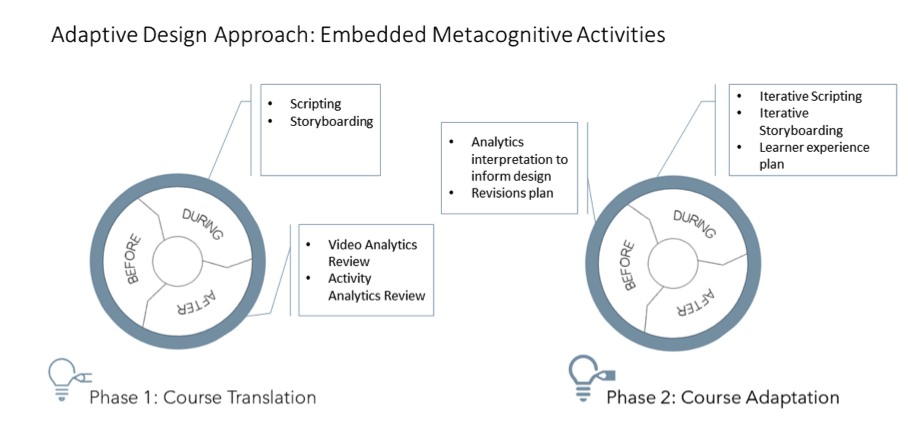by Lauren Scharff, U.S. Air Force Academy*
At a surface level you might wonder what sort of parallel I sense between metacognition and extra credit activity engagement. After all, metacognition is a cognitive process – a process by which someone becomes consciously and intentionally aware of their state of performance and of strategies that might help or are hindering their performance. Extra credit, on the other hand, is an opportunity to earn extra points on an assignment or in a course.
One possible link is that an instructor’s inclusion of both types of activities is motivated by their desire to increase students’ success in a course. While this is likely true, I believe that a more crucial link for us to attend to is the pattern of student “buy-in” to the activities, with stronger students often showing earlier adoption and motivation, and weaker students often showing low motivation and resistance.
As many instructors have observed through their years of teaching, the students who choose to participate in extra credit activities, especially early in a term, are often those who are least likely to need the extra credit. The weaker students, who arguably could benefit most from both the points and additional learning opportunities, choose not to participate, or wait until the very last chance to participate at the end of the semester. Similarly, some of us who have intentionally implemented metacognitive practices into our courses have found that the students who most readily appreciated the benefits of metacognitive practices and used them to modify their learning behaviors to increase their success were the stronger, more advanced students. Many of the weaker students complained that the metacognitive activities were a waste of time because they were focused on learning behaviors and not the specific course material to be learned.
I argue that we should care about this pattern because we want to maximize the learning and success of the full range of our students. Thus, a “one-size-fits-all” approach when implementing metacognitive strategies will almost inevitably fail for too many of our students, and we need to scaffold the activities more than we might initially realize.
This need for scaffolding may not be obvious at first to those of us who already understand a lot about human learning processes and who already believe in and practice metacognition. The benefits seem so apparent to us! But, we must realize that many of our students, especially the weaker ones, won’t immediately perceive the benefits of taking time to reflect on their learning and try new strategies. Many of these students have been “successful” using a limited range of learning behaviors, and have not yet reached the realization that alternate learning approaches would be worth their while, especially as the academic demands within courses increase. Further, shifting learning behaviors takes time and effort, so in the short run, they might see more cost than benefit. Therefore, they avoid spending time trying new learning strategies, and report that metacognitive activities are an even greater “waste of time” because they don’t immediately seem to help them accomplish typical course assignments for which they’ll receive points. In their chapter on “desirable difficulties,” Elizabeth and Robert Bjork note several learning strategies that slow apparent learning in the short term, but enhance long-term learning. While the authors don’t explicitly mention the use of metacognitive strategies, they too fit that category of providing a desirable difficulty.
Some of the differences between the observed levels of motivation and engagement across students might also be linked to student mindset (see Carol Dweck’s work, e.g. Dweck, 1996). Students who show incremental/malleable intelligence beliefs, i.e. mindset, believe that they can improve their abilities in certain skill areas (e.g. math, writing, speaking) rather than believing that they are inherently “good” or “okay” or “bad” at such skills (a fixed/entity mindset). Typically the former type of student seeks learning challenges and mastery-oriented learning behaviors. Metacognitive reflection could be considered a type of mastery-oriented learning behavior. [Hmmmm… sounds like a great topic to research! What IS the relationship between mindset and adoption of metacognitive approaches?]
Changing gears back to application, if you’re an instructor who plans to incorporate metacognitive approaches into your course in order to promote student learning, awareness of different levels of buy-in and some possible reasons behind the differences can help your effort be more successful. You can increase your awareness of how the activities are being received by asking students for their feedback. What do they think about the activities? Do they believe the activities help their learning, why or why not? What is something new they’ve tried and how did it go for them?
Just understanding the student perceptions isn’t enough, however. How and what you do to present the activities and embed them in your course will impact student perceptions and likelihood to engage in the activities. For example, you should be sure to explain (and re-visit multiple times throughout the semester) the potential benefits of metacognitive reflection, addressing student feedback in your discussions. If possible, collect data about their learning and share it with them (e.g. exam performance based on self-reported learning strategies). You might need to take time to explicitly share alternate learning strategies for your course so that if students reflect that what they’re doing is not working well, they have some accessible alternate options to try. Finally, it might be beneficial to make the metacognitive activities worth some points toward the course grade.
The bottom line is that, as instructors, we have control over how we present the value of metacognition in our courses, and by being thoughtful about it, we will be able to increase the “buy-in” from a greater range of our students, hopefully reaching more of those who need it the most.
——-
Bjork, E. L., & Bjork, R. A. (2011). Making things hard on yourself, but in a good way: Creating desirable difficulties to enhance learning. In M. A. Gernsbacher, R. W. Pew, L. M. Hough, & J. R. Pomerantz (Eds.), Psychology and the real world: Essays illustrating fundamental contributions to society (pp. 56-64). New York: Worth Publishers.
Dweck, C. (1996). Implicit theories as Organizers of Goals and Behaviors, pp. 69-90. In: Gollwitzer, P. & Bargh, Eds, The psychology of action: Linking cognition and motivation to behavior, J. Guilford Press: New York.
* Disclaimer: The views expressed in this document are those of the authors and do not reflect the official policy or position of the U. S. Air Force, Department of Defense, or the U. S. Govt.

